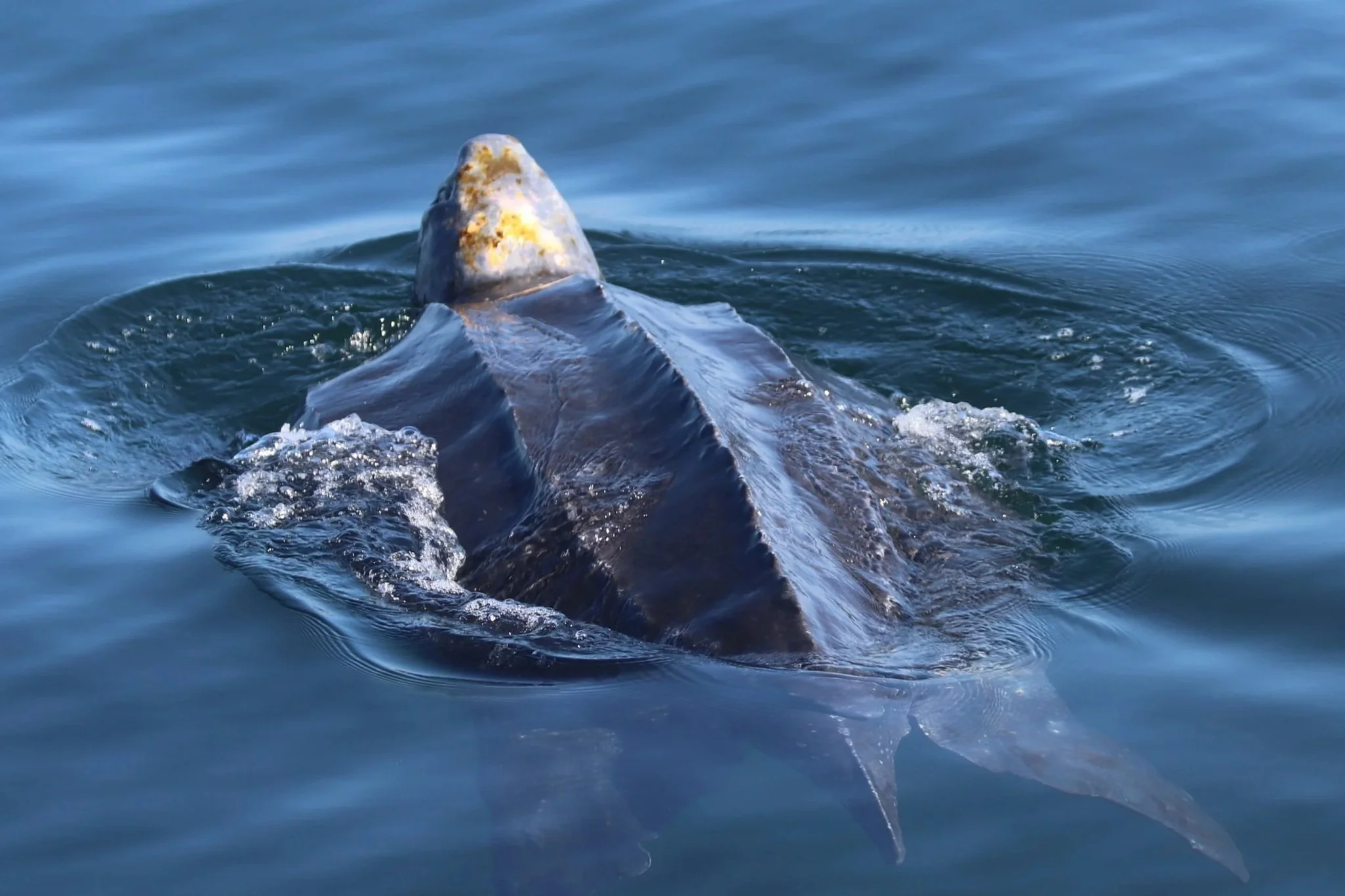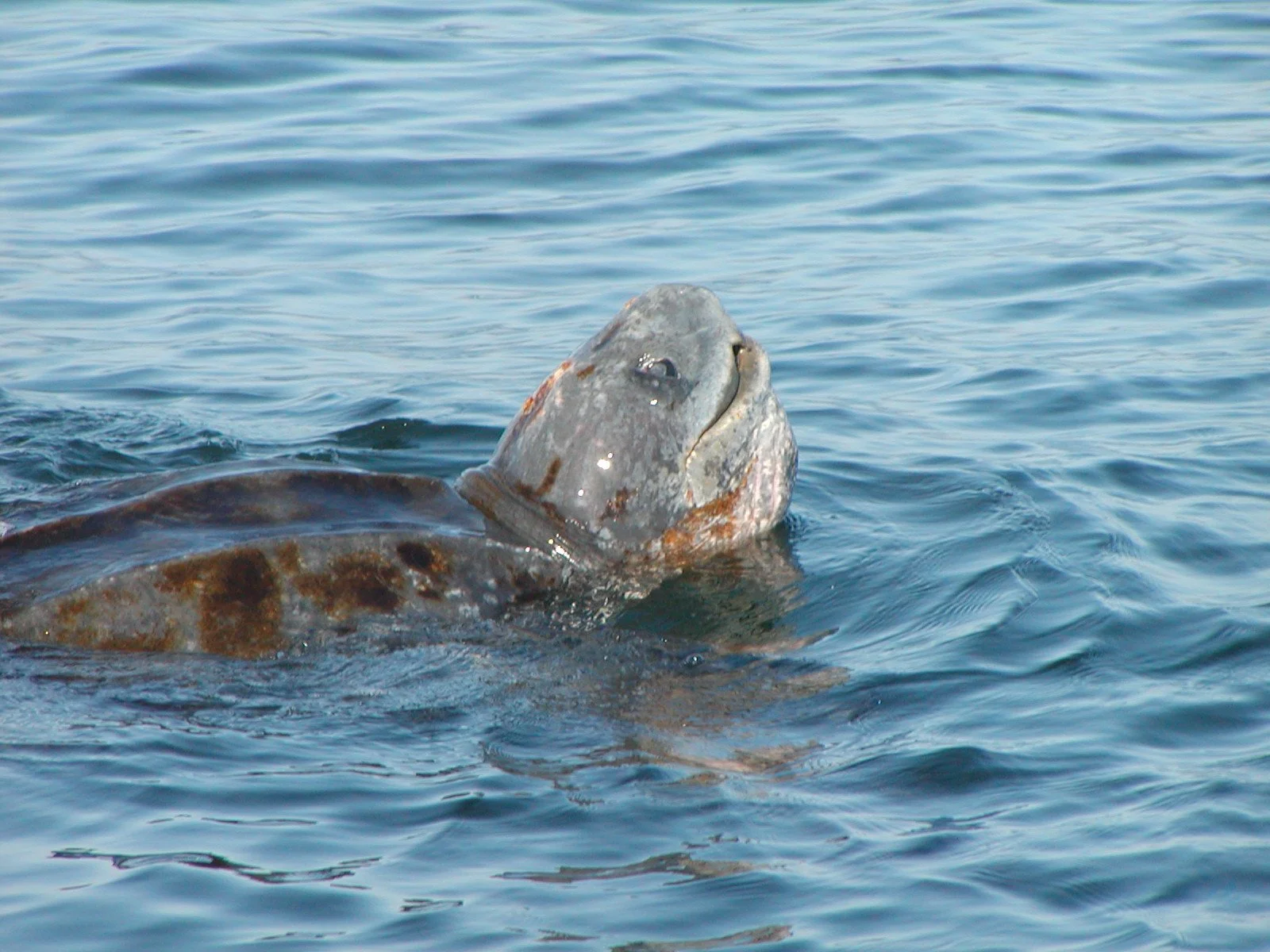Upwelling, arguably our favorite ocean phenomenon here at Upwell, describes when cold waters from deep in the ocean are brought to the surface. There are many factors that can contribute to Upwelling depending on where it occurs including wind, water temperature, currents, and the rotation of the earth. Coastal upwelling plays an important role on the US West Coast, and is the reason why leatherback sea turtles come to forage in our waters.
When wind blows over the ocean, friction between the two has the ability to move surface waters. On the West Coast of the United States, winds in spring and summer blow from north to south. Surface waters are not moved south, however, because of a force called the Coriolis Effect. Caused by the rotation of the earth, the Coriolis Effect deflects water to the right of the direction that the wind is blowing (when in the northern hemisphere). This means that surface waters tend to get pushed offshore to the west.
As surface waters are displaced by the wind (and its buddy, Coriolis), cold and nutrient rich waters well up from the deep sea to replace them.
The nutrients in these colder upwelled waters create blooms of photosynthetic marine microorganisms (phytoplankton), when they are exposed to the larger amounts of light at the ocean's surface.
This primary productivity travels through the food web, creating blooms of ocean life that attract marine megafauna from near and far. Leatherback sea turtles come to feast on the abundance of gelatinous zooplankton, commonly referred to as jellyfish, their favorite of which are Pacific sea nettles (Chrysaora fuscescens).
Coastal upwelling ecosystems like the one on the US West Coast are some of the most productive ecosystems worldwide, however, the all-you-can-eat upwelling buffet in our waters is a seasonal one. As the winds change in the fall and nutrients are no longer taking the cold-water elevator to the surface, the diverse web of life dissipates. The leatherback sea turtles (which are part of the West Pacific population) will make their way back across the Pacific to waters near nesting beaches in Southeast Asia.
Upwell collaborates with NOAA to monitor leatherback sea turtles off the US West Coast in order to provide data on their behavior and movements to resource managers and support efforts to make decisions that enable sea turtles to persist and thrive. It is only with further understanding about how sea turtles use their ocean habitats that we can create adaptive conservation measures, which is why Upwell uses innovative techniques to track sea turtles in the ocean and even predict their movements. To read more stories about monitoring leatherbacks on the US West Coast, check out the links below!
Sources:
Gaines, S., & Airame, S. (2017, December). Upwelling. NOAA Ocean Explorer. Retrieved February 3, 2024, from https://oceanexplorer.noaa.gov/explorations/02quest/background/upwelling/upwelling.html
The Coriolis effect - Currents: NOAA’s National Ocean Service Education. (n.d.). https://oceanservice.noaa.gov/education/tutorial_currents/04currents1.html








